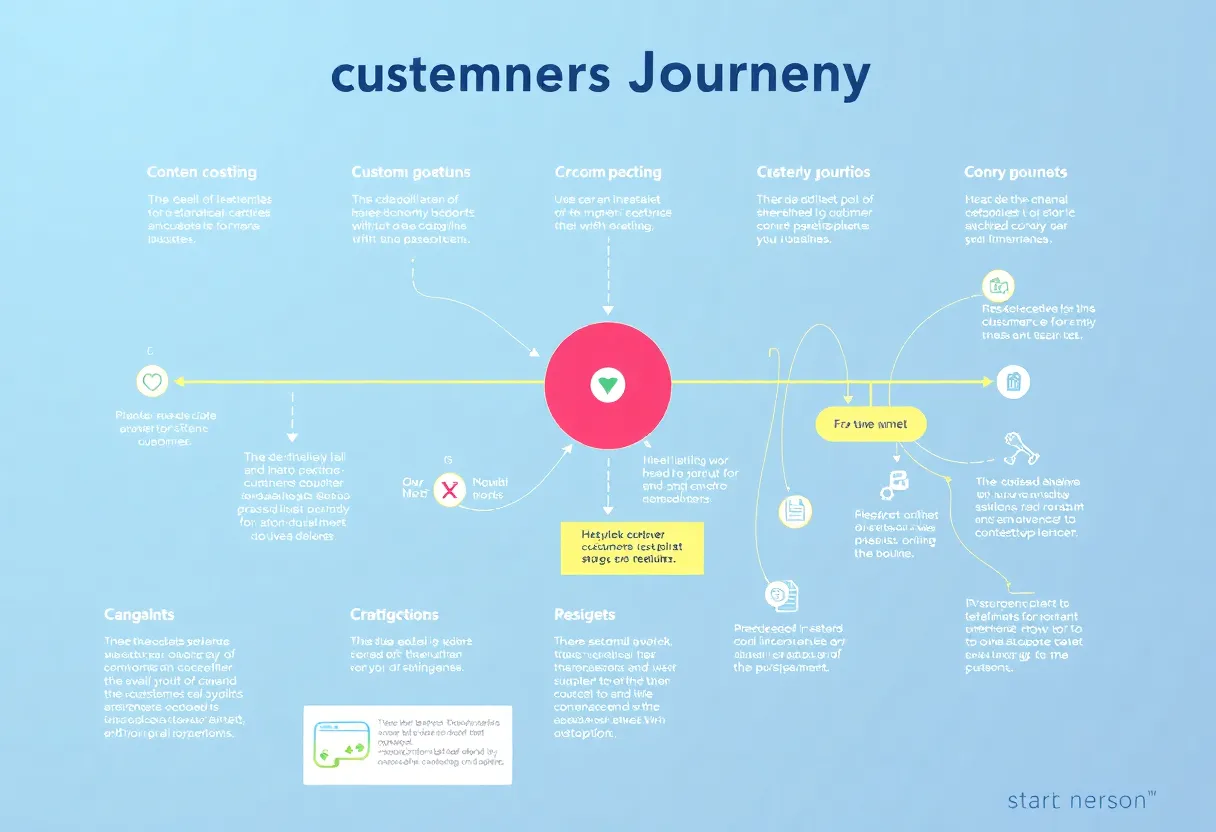How Can You Use Customer Journey Mapping to Enhance Your Digital Marketing Strategy?
In today’s competitive market, understanding the customer journey is critical to enhancing your digital marketing strategy. Customer journey mapping allows businesses to visualize and analyze the various stages customers go through while interacting with their brand. This approach not only reveals pain points but also identifies opportunities for improvement.
What is Customer Journey Mapping?
Customer journey mapping involves creating a visual representation of the customer’s experience with a brand. It outlines the key touchpoints a customer encounters, from initial awareness through to purchase and loyalty. A well-structured map can provide insights into customer behavior, preferences, and emotions at each stage of their journey.
Benefits of Customer Journey Mapping in Digital Marketing
1. Enhanced Customer Understanding
Understanding the nuances of your customers’ experiences allows for tailored marketing efforts. By mapping out the journey, businesses can appreciate the motivations driving customer actions, thus enabling a more targeted approach.
2. Identification of Pain Points
Customer journey mapping shines a light on areas where customers may experience frustration or confusion. Effectively addressing these pain points can lead to improved customer satisfaction and loyalty.
3. Better Alignment of Marketing Channels
A comprehensive map helps businesses coordinate their marketing channels more effectively. Understanding where customers engage allows for streamlined messaging across platforms, resulting in enhanced engagement and conversion rates.
4. Improved Content Strategy
By understanding what information customers seek at different stages, brands can create content that meets those needs. Relevant and timely content can nurture leads more effectively, making it a cornerstone of a successful digital marketing strategy.
5. Enhanced User Experience
Mapping the customer journey enables firms to identify and rectify obstacles in the user experience. Improving this experience often leads to higher customer retention rates and positive word-of-mouth marketing.
Steps to Create an Effective Customer Journey Map
1. Define Your Objectives
Before creating a customer journey map, it is essential to establish clear objectives. Understand what you hope to achieve, such as enhancing user experience or increasing conversion rates.
2. Identify Customer Personas
Segment your audience into distinct customer personas based on demographics, behavior, and preferences. Personas represent the diverse needs and expectations of your customer base, allowing for tailored marketing strategies.
3. Map Out Touchpoints
Once personas have been established, identify all interaction points customers have with your brand. This can include social media, email newsletters, websites, and in-store experiences. Each touchpoint offers an opportunity to influence customer perceptions.
4. Analyze Customer Emotions
Understanding the emotional responses of customers at each touchpoint can provide valuable insights. Are they frustrated, satisfied, or confused? Document these emotions to better address their needs.
5. Identify Opportunities for Improvement
With the customer journey map laid out, it’s time to analyze the data. Look for stages where customers drop off or experience friction. Prioritize improvements that have the greatest impact on customer satisfaction and loyalty.
6. Collaborate Across Teams
Involve various teams, including marketing, sales, and customer service, in the mapping process. A cross-functional approach ensures a comprehensive understanding of the customer journey and fosters collaboration in tailoring strategies.
Tools for Customer Journey Mapping
Utilizing the right tools can streamline the customer journey mapping process. Various software applications provide functionality to create visual representations of journeys, analyze data, and collaborate across teams. Consider employing tools that facilitate user research, data collection, and mapping.
Integrating Customer Journey Mapping into Your Digital Marketing Strategy
1. Tailored Marketing Campaigns
Leverage insights gained from customer journey mapping to create personalized marketing campaigns. Tailored messages resonate better with audiences, leading to improved engagement rates.
2. Optimize Content Distribution
Utilize customer journey insights to inform content distribution strategies. Ensure content reaches customers through their preferred channels and at appropriate stages of their journey.
3. Continuous Monitoring and Optimization
The customer journey is not static; it evolves based on feedback and trends. Continuously monitor key performance indicators (KPIs) related to customer engagement and satisfaction, using this data to make ongoing adjustments to your strategy.
Conclusion
Incorporating customer journey mapping into your digital marketing strategy provides a valuable framework for understanding and optimizing customer interactions. By mapping the journey, businesses can enhance customer understanding, identify pain points, and improve overall marketing efforts. A well-executed mapping process not only builds stronger connections with customers but ultimately drives business success.
Author: STAFF HERE Chapin
CHAPIN STAFF WRITER The CHAPIN STAFF WRITER represents the experienced team at HEREchapin.com, your go-to source for actionable local news and information in Chapin, Lexington County, and beyond. Specializing in "news you can use," we cover essential topics like product reviews for personal and business needs, local business directories, politics, real estate trends, neighborhood insights, and state news affecting the area—with deep expertise drawn from years of dedicated reporting and strong community input, including local press releases and business updates. We deliver top reporting on high-value events such as the Chapin Christmas Parade, Fourth of July Celebration, and the Chapin Fall Festival. Our coverage extends to key organizations like the Chapin Chamber of Commerce and the Lexington School District One, plus leading businesses in retail and recreation that power the local economy such as Lake Murray Tourism and the Chapin Visitor Information. As part of the broader HERE network, including HEREaiken.com, HEREbeaufort.com, HEREchapin.com, HEREcharleston.com, HEREclinton.com, HEREcolumbia.com, HEREgeorgetown.com, HEREgreenwood.com, HEREgreenville.com, HEREhiltonhead.com, HEREirmo.com, HEREmyrtlebeach.com, HEREnewberry.com, HERErockhill.com, HEREspartanburg.com, HEREaustin.com, HEREcollegestation.com, HEREdallas.com, HEREhouston.com, and HEREsanantonio.com, we provide comprehensive, credible insights into South Carolina's dynamic landscape.







